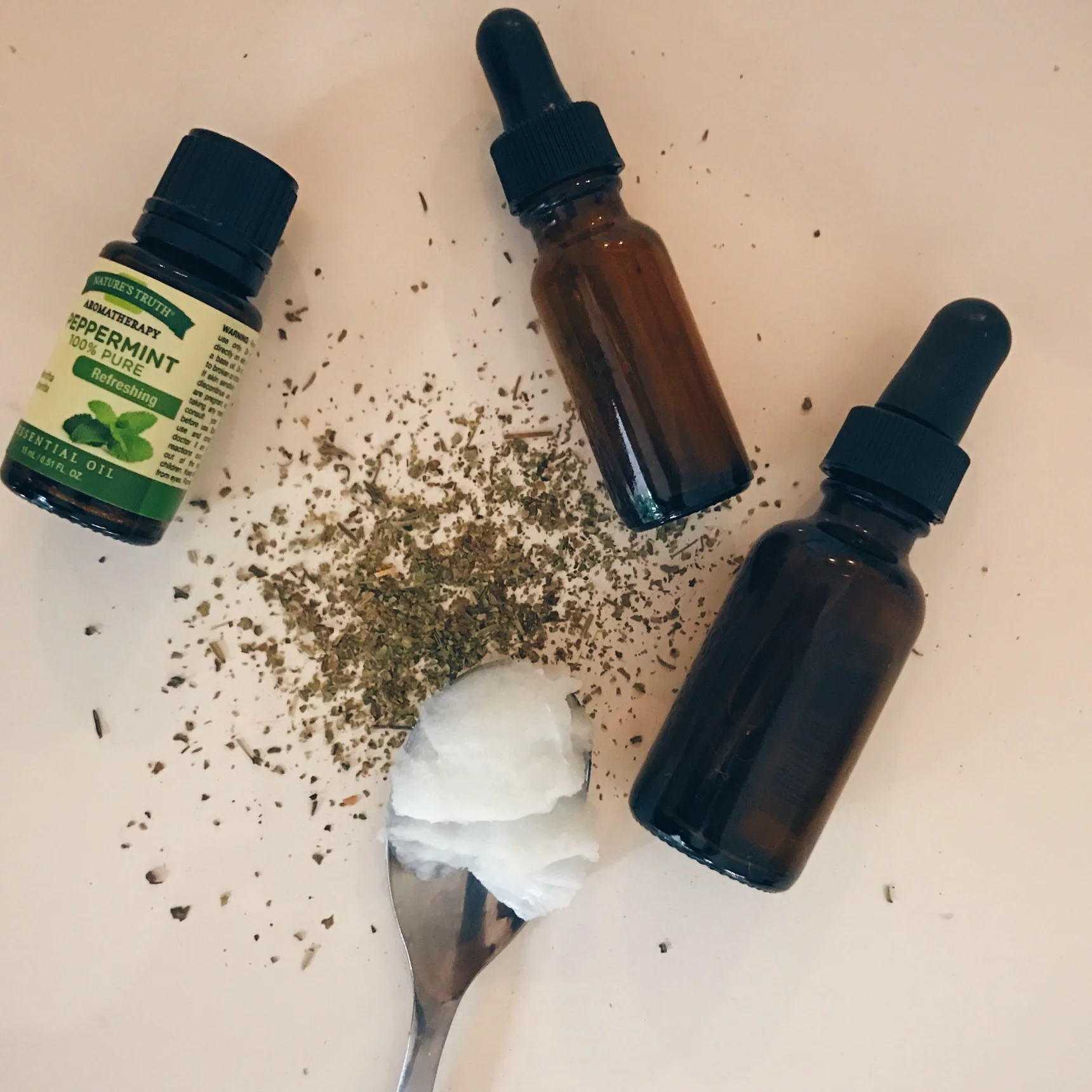Ayurveda Toolbox: Uses and Benefits of Oil-pulling
OIL PULLING & AYURVEDA
Ayurveda, often explained as 'the science of life' lays out many self-care techniques used as part of a larger, integrative holistic health practice with a purpose of supporting your most optimal health. Practices are prescribed to prevent and treat active body, mind, and spirit imbalances. One of these self-care rituals is known as 'oil pulling.'
What is OIL PULLING?
Oil pulling (sanskrit: gaṇḍūṣa) is an Ayurvedic health remedy practiced to freshen and purify the oral cavity of a substance called ama (sanskrit: āma) from the mouth by cleansing the gums and teeth. Ama is the Ayurvedic term referring to the undigested, metabolic byproducts that tend to build up on the surface of the tongue, mixing with saliva to circulate as toxic substance in the body. Ama in excess leads to inflammation, blockages, and chronic illness if it is not addressed. Oil pulling is a self-cleansing technique to keep all that sticky-icky ama at bay.
HOW DOES OIL PULLING WORK?
Oil pulling's main purpose is to support your oral and systematic health. Oil is swished in the mouth to remove microbes, improve the health of the gums, clean the tongue, cut through plaque, freshen the breath, and even whiten teeth... The oils used are lipophilic, that is, they attract other oil and fat soluble byproducts, thus pulling them to the surface.
WHAT ARE THE MAJOR BENEFITS TO OIL PULLING?
Oil-pulling is a very individualistic practice; everyone has different needs and goals. Thus, the ingredients used for oil-pulling as an Ayurvedic ritual depend on a person's constitution (prakriti) and dosha and the particular qualities of the current season, among other considerations. It is also important to make note that Ayurveda lays out contra-indications for this practice; it's not for everyone. However, modern studies have shown that oil pulling can be used as an effective preventive practice in maintaining and improving oral health for most people.
A base oil and condition-specific herbs are combined to create this natural, safe and mild mouth-wash. Oil pulling is a great alternative to harsh, chemical-laden mouthwashes in the majority of our supermarkets (say goodbye to preservatives, alcohol, coloring and artificial flavors!).
HOW DO I START?
HERE ARE SOME OIL PULLING BASICS:
1. HOW DO I CHOOSE AN OIL-PULLING BASE OIL? -- try to find an unrefined, cold-pressed, organic oil (all three qualities recommended to keep the quality pure). Coconut oil is one of the most popular oils used in the US because of its sweet taste and anti-fungal/anti-bacterial properties. One major benefit of choosing coconut oil is for its lauric acid content (an antimicrobial that inhibits tooth-decay-causing bacteria). In the tradition of Ayurveda however, coconut oil is generally only recommended for those with a pitta imbalance. Nothing is ever yuniversally recommended when it comes to adopting self-care practices that aim to bring your balance. Sesame and sunflower oil are most traditionally favored. You can take an online dosha quiz for insights into your constitution or consult a specialist if you are interested in an Ayurvedic lifestyle, or just reach out to us for a recommendation.
sesame oil
sunflower oil
coconut oil
olive oil
almond oil
ghee or milk
2. WHICH ESSENTIAL OILS SHOULD I ADD-IN? -- Oil pulling as an effective remedy in Ayurveda is all about the herbs infused into the base oil. THIS IS A MAJOR KEY! A variety of herbs and essential oils can be added into your chosen base oil for a dosha balancing effect (you did take the "dosha quiz," right?). Two drops of oil, or 1/4 tsp of herbs per tbsp of oil. Choose ingredients which are lubricating or moisturizing and heavy for vata, alleviating or cooling for pitta, and clearing/detoxing for kapha.
peppermint, cinnamon, clove
lemon grass, orange, lavender
oregano oil
cumin, turmeric
HOW TO OIL PULL-
STEP-BY-STEP TIPS:
Use only high-quality, organic base oils. (I like to combine my preferred ingredients into a dropper for less mess).
Schedule your oil pulling ritual first thing in the morning along with the rest of your oral hygiene routine and before drinking or eating.
Prep for oil-pulling by gently cleaning the tongue with a tongue scraper and massaging your neck to relax the back of the mouth and the throat.
Begin with one tablespoon of oil, increasing or decreasing depending on your tolerance level, eventually working up to 2 tablespoons gradually and as you do the ritual consistently over time. (Optional: add two drops of essential oils to the base oil, or infuse with dosha specific herbs, as mentioned above).
Swish the mixture around in your mouth for 5 minutes, gradually working up to 20 minutes, gradually and as you do the ritual consistently over time. Always start small and as you become more comfortable with the practice, adding on.
Press the oil through teeth and between gums engaging the facial muscles and tongue as you move the oil around in the mouth. The oil will become milky-white in color and you will notice a change in viscosity.
When finished, spit the oil into a waste receptacle, or outside, but not in the sink, tub or toilet. Oils will build up in pipes, clogging sinks and drains!
Rinse well with warm water. NEVER SWALLOW THE OIL. It is filled with bacteria from the mouth and saliva.
Here is the order: Tongue scrape, oil pull, rinse, floss, brush.
Oil pulling is most effective when practiced in conjunction with a good diet and for anyone with healthy digestion. (I would actually recommend someone with an unwholesome diet concentrate on building healthy eating habits first to see if it reduces the amount of mucus in the mouth. Lots of build-up on the tongue is an indication to start with transforming your diet, as it all starts in the gut!)
I hope this helps! Have you tried oil-pulling? What did you think?
+ Ayurvedic Notes: Purifying and detoxing, removes excess kapha, lubricating for vata.
+ Please consult a medical professional if you have any injuries, illnesses, or chronic pain before attempting any practices.
Resources:
Singh, A., & Purohit, B. (2011). Tooth brushing, oil pulling and tissue regeneration: A review of holistic approaches to oral health. Journal of Ayurveda and Integrative Medicine.
Asokan, S., et. al. (2008). Effect of oil pulling on Streptococcus mutans count in plaque and saliva using Dentocult SM Strip mutans test: A randomized, controlled, triple-blind study. Journal of Indian Society of Pedodontics and Preventive Dentistry.
Sooryavanshi, S. (1992) Prevention and Treatment of Diseases of Mouth by Gandoosh and Kavalu, Bharati Vidyapeeth’s College of Ayurveda.














